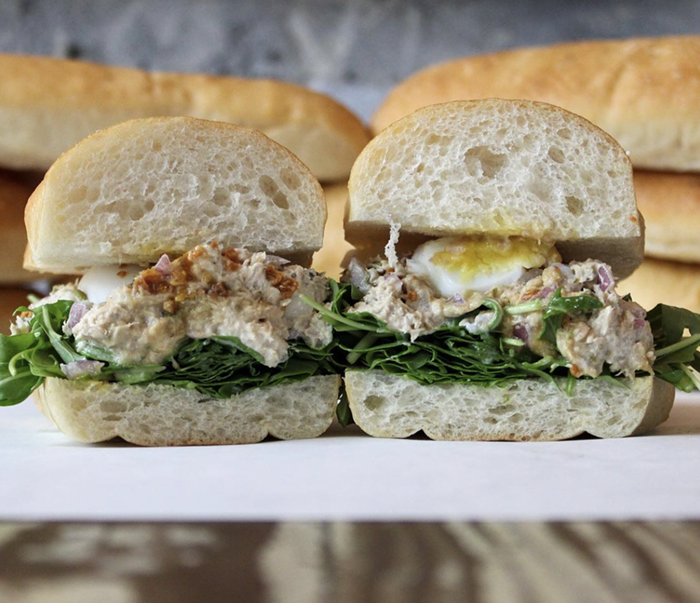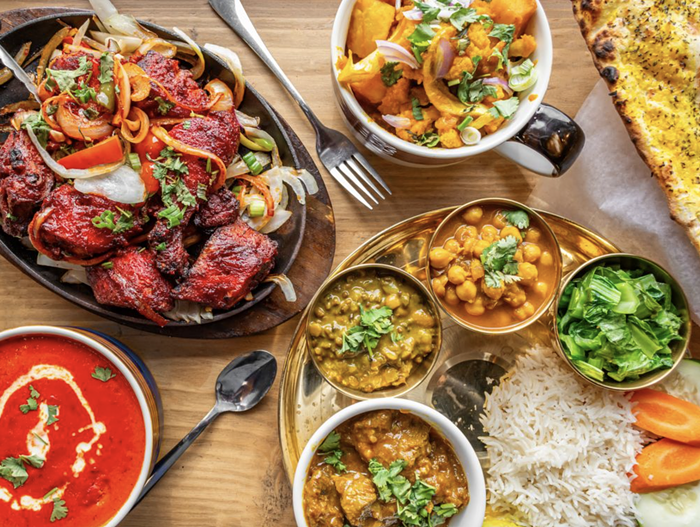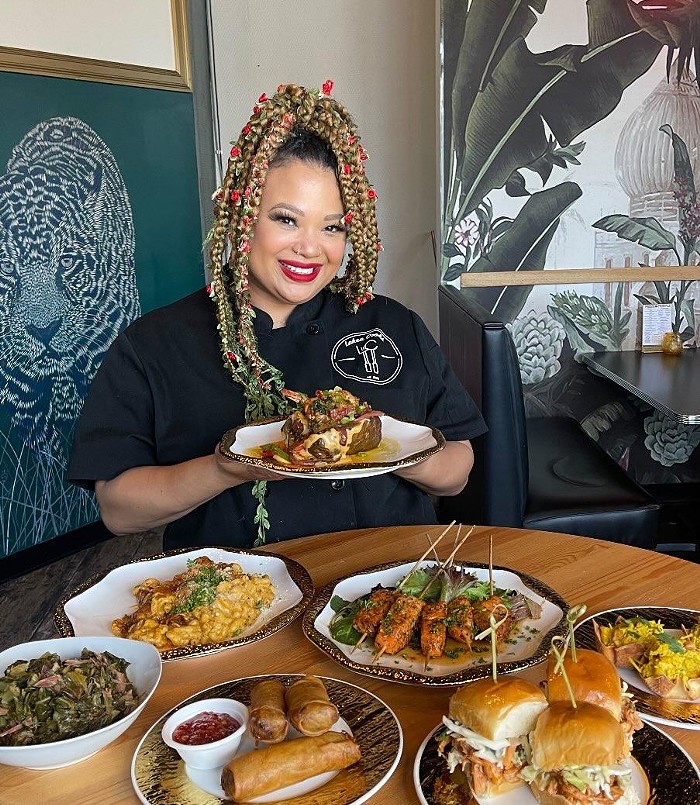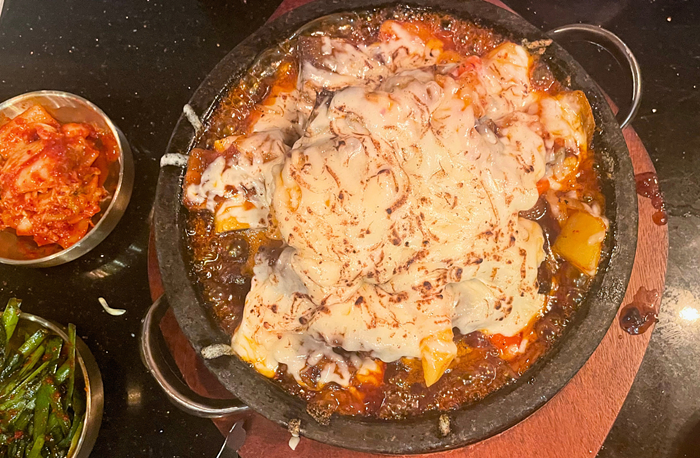For New Year's Eve, chefs across the city create multicourse dinners filled with ingredients like fresh oysters, foie gras, and dry-aged, grass-fed beef. Champagne bottles are uncorked and the contents consumed with abandon. In the restaurant world, New Year's feasts have become a celebratory, indulgent tradition.
These meals mark the start of a new year as defined by the Western calendar, also known as the Christian or Gregorian calendar, after Pope Gregory XIII, who introduced it in 1582. But thousands of years before the pope gave us his calendar, civilizations across the world measured the passage of time by lunar calendars. The Lunar New Year doesn't occur on the fixed date of January 1, instead falling sometime in late January or early February.
The new lunar year begins this Monday, February 8. And even though it doesn't get the fanfare that New Year's Eve meals get, for Chinese, Korean, and Vietnamese people, Lunar New Year is a deeply significant holiday. Celebrations vary, but they share one important characteristic: elaborate home-cooked meals eaten with loved ones.
"Lunar New Year was definitely a bigger holiday than January first," says Rachel Yang, chef and co-owner of Joule, Revel, and Trove restaurants. Yang, who grew up in South Korea, remembers that to celebrate the holiday, called Seollal, upwards of 20 relatives would gather at her uncle's house. Her mother and aunts would begin cooking food several days in advance, always making sure to prepare tteokguk, a clear broth filled with glutinous rice cakes. The simple broth symbolizes a fresh start to the new year, and the rice cakes, shaped like coins, represent prosperity. The dishes were set on an offering table for Yang's grandparents and other ancestors.
"The offering table had pretty much everything... the rice cake soup, pan-fried whole fish, several different kinds of pancakes, braised short rib, and an array of banchan," Yang remembers. After the children bowed and paid respect to their elders, living and deceased, they received money and blessings. Then, she says, "all the aunts would turn the offering table into a big feast to feed everyone."
Several friends of mine have similar fond recollections of their Vietnamese family's celebrations of Lunar New Year, called Tê´t.
"My memories are full of family and friends and food," says Jen Pham-Corbett. "The women cooked and gabbed in the kitchen, men played cards and drank and smoked, and all of us kids just ran around the house sneaking sweets and counting our li xi, special money that comes in a lucky red envelope." The Tê´t spread included dishes such as braised pork, pickled leeks, platters of candied fruit, and, most important, bánh chung, a labor-intensive dish made of parcels of glutinous rice, mung beans, and minced pork that are wrapped in banana leaves and steamed.
According to Chinese tradition, on Lunar New Year, people who have moved away return to their home village to share meals with their families. Appropriately, it's called the Reunion Feast. Hsiao-Ching Chou, a Seattle food writer and former food editor at the Seattle Post-Intelligencer whose family immigrated to the United States from Taiwan, told me that the Lunar New Year dinner should not only include family members and friends, but also many different types of dishes.
"This started in an agrarian society, where everyday meals were probably pretty humble," she explains. The variety of food—seafood, various meats, noodles, dumpling, sweets—is precisely what makes the day special. At her family's annual holiday meal, "There's always dumplings, a whole fish, orange beef, and some sort of chicken dish," she says. "Then we'll have a tofu dish—probably ma po tofu, just because I like it—and a soup, like winter melon. There will be greens too, plus desserts."
Chou describes a Chinese Lunar New Year meal as a "sumptuous immersion course in food and symbolism." The symbolism even extends to the sounds and shapes of the Chinese language and characters. Fish evokes abundance because the sound of the word "fish" is nearly identical to that of the word "extra." Sticky rice cakes are served because the characters for "sticky" and "year" are also homophones. Dumplings and fresh oranges symbolize wealth because their round shapes recall those of ancient Chinese gold ingots.
New Year's dishes are all representations of wishes for good luck, good fortune, longevity, and prosperity, according to Chou. "Chinese people find ways to connect food items with one or more of those qualities," she says, laughing. "We really double, triple, and quadruple down on luck, covering all of our bases there."
As Asian customs make their way into Western ones, American food culture is enriched. Chou is also a cooking instructor at downtown's Hot Stove Society, where she teaches mostly non-Asian students how to make pot stickers and the simple techniques of wok cooking. Her classes, including her most recent one called "Chinese New Year," routinely sell out.
"People are intimidated by cooking Asian food," says Chou. "But they are also hungry for the experience. I want to make it accessible to people without dumbing it down, but also acknowledge that there is always some bit of adaptation that happens."
For anyone interested in cooking a Chinese dish for Lunar New Year, Chou recommends her Lion's Head Meatballs. While Chou's recipe calls for browning the meatballs in a wok, she says you can do it without one. The process matters less than the spirit in which they are made. Find the recipe below.
For more of Hsiao-Ching Chou's recipes, visit her blog: mychinesesoulfood.com. For more public ways to celebrate Lunar New Year, see our Things To Do calendar.
Lion’s Head Meatballs
Serves 4 as part of a meal
- 1 pound ground pork
- 2 tablespoons soy sauce
- 1 tablespoon Shaoxing wine or a dry white wine
- 1 teaspoon finely minced fresh ginger (or grated with a Microplane)
- 1 stalk green onion, finely chopped
- 1 teaspoon sesame oil
- 1 cup vegetable oil
- 1/2 pound Chinese cabbage
- 1 quart water
- 1 teaspoon salt
- 1 bundle cellophane noodles (mung bean thread)
In a large mixing bowl, combine the ground pork, soy sauce, wine, ginger, green onions, and sesame oil. Mix very well. Form meatballs the size of tennis balls. You should get about 6 meatballs. Heat the wok over high heat. Add the vegetable oil and heat until it just begins to smoke. Using a slotted spoon, gently lower several of the meatballs into the oil. You will need to do this in batches. Brown the meatballs on each side. You don’t need to cook the meatballs all the way through. The point is to brown the outside. It should take 2-3 minutes. You may have to adjust the heat as needed. Repeat with the remaining meatballs.
Cut the core out of the Chinese cabbage. You can leave the inner leaves whole. The larger, outer leaves, you can cut into segments. It’s okay if the pieces are large, because by the time the braise is done, the cabbage leaves will cook down. If the pieces are too small, they’ll “melt.” Place the cabbage leaves in a Dutch oven. Add the browned meatballs and the quart of water. Bring the pot to a low boil, then turn down the heat to low. Let simmer for about 45 minutes, checking the pot to make sure it doesn’t cook down too fast. Taste the broth. Add the teaspoon of salt, more or less, as desired. Add the noodles into the broth and let soften for about 5 minutes. Make sure the noodles get submerged in the broth. When the noodles are cooked through, the meatballs are ready to serve. Serve with steamed rice.



















